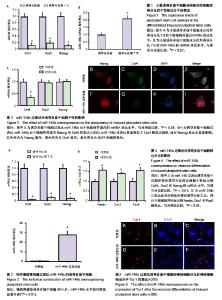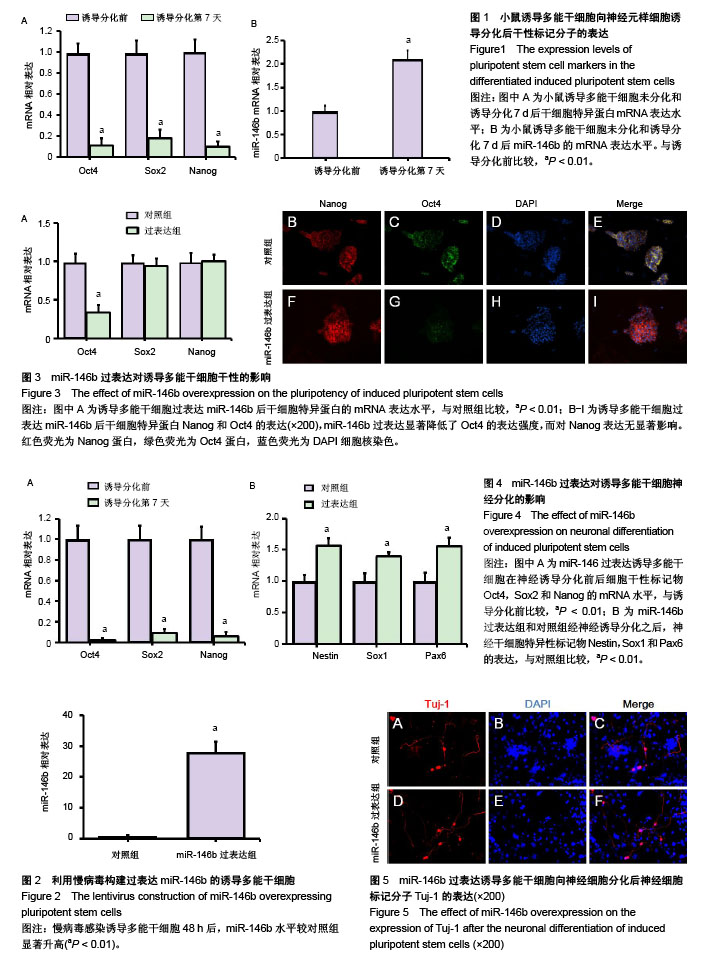| [1] Fridley KM, Kinney MA, McDevitt TC. Hydrodynamic modulation of pluripotent stem cells. Stem Cell Res Ther. 2012;3(6):45. [2] Zaninovic N, Zhan Q, Rosenwaks Z. Derivation of human embryonic stem cells (hESC). Methods Mol Biol. 2014;1154: 121-144.[3] Lewandowski J, Kurpisz M. Techniques of Human Embryonic Stem Cell and Induced Pluripotent Stem Cell Derivation. Arch Immunol Ther Exp (Warsz). 2016;64(5):349-370.[4] Nefzger CM, Su CT, Fabb SA, et al. Lmx1a allows context-specific isolation of progenitors of GABAergic or dopaminergic neurons during neural differentiation of embryonic stem cells. Stem Cells. 2012;30(7):1349-1361.[5] Roybon L, Hjalt T, Christophersen NS, et al. Effects on differentiation of embryonic ventral midbrain progenitors by Lmx1a, Msx1, Ngn2, and Pitx3. J Neurosci. 2008;28(14): 3644-3656.[6] Sonntag KC, Pruszak J, Yoshizaki T, et al. Enhanced yield of neuroepithelial precursors and midbrain-like dopaminergic neurons from human embryonic stem cells using the bone morphogenic protein antagonist noggin. Stem Cells. 2007;25(2):411-418.[7] Sundberg M, Bogetofte H, Lawson T, et al. Improved cell therapy protocols for Parkinson's disease based on differentiation efficiency and safety of hESC-, hiPSC-, and non-human primate iPSC-derived dopaminergic neurons. Stem Cells. 2013;31(8):1548-1562.[8] Doi D, Morizane A, Kikuchi T, et al. Prolonged maturation culture favors a reduction in the tumorigenicity and the dopaminergic function of human ESC-derived neural cells in a primate model of Parkinson's disease. Stem Cells. 2012;30(5):935-945. [9] Hao J, Zhang S, Zhou Y, et al. MicroRNA 421 suppresses DPC4/Smad4 in pancreatic cancer. Biochem Biophys Res Commun. 2011;406(4):552-557.[10] Li G, Li QS, Li WB,ET AL.miRNA targeted signaling pathway in the early stage of denervated fast and slow muscle atrophy.Neural Regen Res. 2016;11(8):1293-1303.[11] Hao J, Zhang S, Zhou Y, et al. MicroRNA 483-3p suppresses the expression of DPC4/Smad4 in pancreatic cancer. FEBS Lett. 2011;585(1):207-213.[12] Zhang J, Zhang Z, Zhang DY, et al. microRNA 126 inhibits the transition of endothelial progenitor cells to mesenchymal cells via the PIK3R2-PI3K/Akt signalling pathway. PLoS One. 2013;8(12):e83294. [13] Cui C, Shi X. miR-187 inhibits tumor growth and invasion by directly targeting MAPK12 in osteosarcoma. Exp Ther Med. 2017;14(2):1045-1050.[14] Wang L, Li H, Chen Q, et al. Wnt signaling stabilizes the DIXDC1 protein through decreased ubiquitin-dependent degradation. Cancer Sci. 2010;101(3):700-706. [15] Gao X, Zhu X, Sun Y, et al. MicroRNA?141 inhibits the self?renewal of glioblastoma stem cells via Jagged1. Mol Med Rep. 2017;16(1):167-173.[16] Di Fiore R, Drago-Ferrante R, Pentimalli F, et al. MicroRNA-29b-1 impairs in vitro cell proliferation, self?renewal and chemoresistance of human osteosarcoma 3AB-OS cancer stem cells. Int J Oncol. 2014;45(5): 2013-2023.[17] Lian X, Hsiao C, Wilson G, et al. Robust cardiomyocyte differentiation from human pluripotent stem cells via temporal modulation of canonical Wnt signaling. Proc Natl Acad Sci U S A. 2012;109(27):E1848-1857. [18] Zheng HZ, Jiang W, Zhao XF,et al.Electroacupuncture induces acute changes in cerebral cortical miRNA profile, improves cerebral blood flow and alleviates neurological deficits in a rat model of stroke.Neural Regen Res. 2016;11(12):1940-1950.[19] Shan X, Miao Y, Fan R, et al. MiR-590-5P inhibits growth of HepG2 cells via decrease of S100A10 expression and Inhibition of the Wnt pathway. Int J Mol Sci. 2013;14(4): 8556-8569.[20] Cui GM, Zhao YX, Zhang NN, et al. Amiloride attenuates lipopolysaccharide-accelerated atherosclerosis via inhibition of NHE1-dependent endothelial cell apoptosis. Acta Pharmacol Sin. 2013;34(2):231-238.[21] Zhao Y, Ji S, Wang J, et al. mRNA-Seq and microRNA-Seq whole-transcriptome analyses of rhesus monkey embryonic stem cell neural differentiation revealed the potential regulators of rosette neural stem cells. DNA Res. 2014; 21(5):541-554.[22] Thomson M, Liu SJ, Zou LN, et al. Pluripotency factors in embryonic stem cells regulate differentiation into germ layers. Cell. 2011;145(6):875-889. [23] Behbahaninia M, Ramey WL, Sindhwani MK, et al. Differential expression of pluripotency factors Sox2 and Oct4 regulate neuronal and mesenchymal lineages. Neurosurgery. 2011;69(4):N19.[24] Lizarbe MA, Calle-Espinosa J, Fernández-Lizarbe E, et al. Colorectal Cancer: From the Genetic Model to Posttranscriptional Regulation by Noncoding RNAs. Biomed Res Int. 2017;2017:7354260.[25] Siomi H, Siomi MC. Posttranscriptional regulation of microRNA biogenesis in animals. Mol Cell. 2010;38(3): 323-332.[26] Liu J, Wang L, Su Z, et al. A reciprocal antagonism between miR-376c and TGF-β signaling regulates neural differentiation of human pluripotent stem cells. FASEB J. 2014;28(11):4642-4656.[27] Tay YM, Tam WL, Ang YS, et al. MicroRNA-134 modulates the differentiation of mouse embryonic stem cells, where it causes post-transcriptional attenuation of Nanog and LRH1. Stem Cells. 2008;26(1):17-29.[28] Boissart C, Nissan X, Giraud-Triboult K, et al. miR-125 potentiates early neural specification of human embryonic stem cells. Development. 2012;139(7):1247-1257. [29] Li Y, Wang F, Lee JA, et al. MicroRNA-9a ensures the precise specification of sensory organ precursors in Drosophila. Genes Dev. 2006;20(20):2793-2805.[30] Yoon SO, Kim EK, Lee M, et al. NOVA1 inhibition by miR-146b-5p in the remnant tissue microenvironment defines occult residual disease after gastric cancer removal. Oncotarget. 2016;7(3):2475-2495. [31] Wang H, Jiang M, Xu Z, et al. miR-146b-5p promotes VSMC proliferation and migration. Int J Clin Exp Pathol. 2015;8(10):12901-12907.[32] Xie L, Zeng X, Hu J, et al. Characterization of Nestin, a Selective Marker for Bone Marrow Derived Mesenchymal Stem Cells. Stem Cells Int. 2015;2015:762098. |

